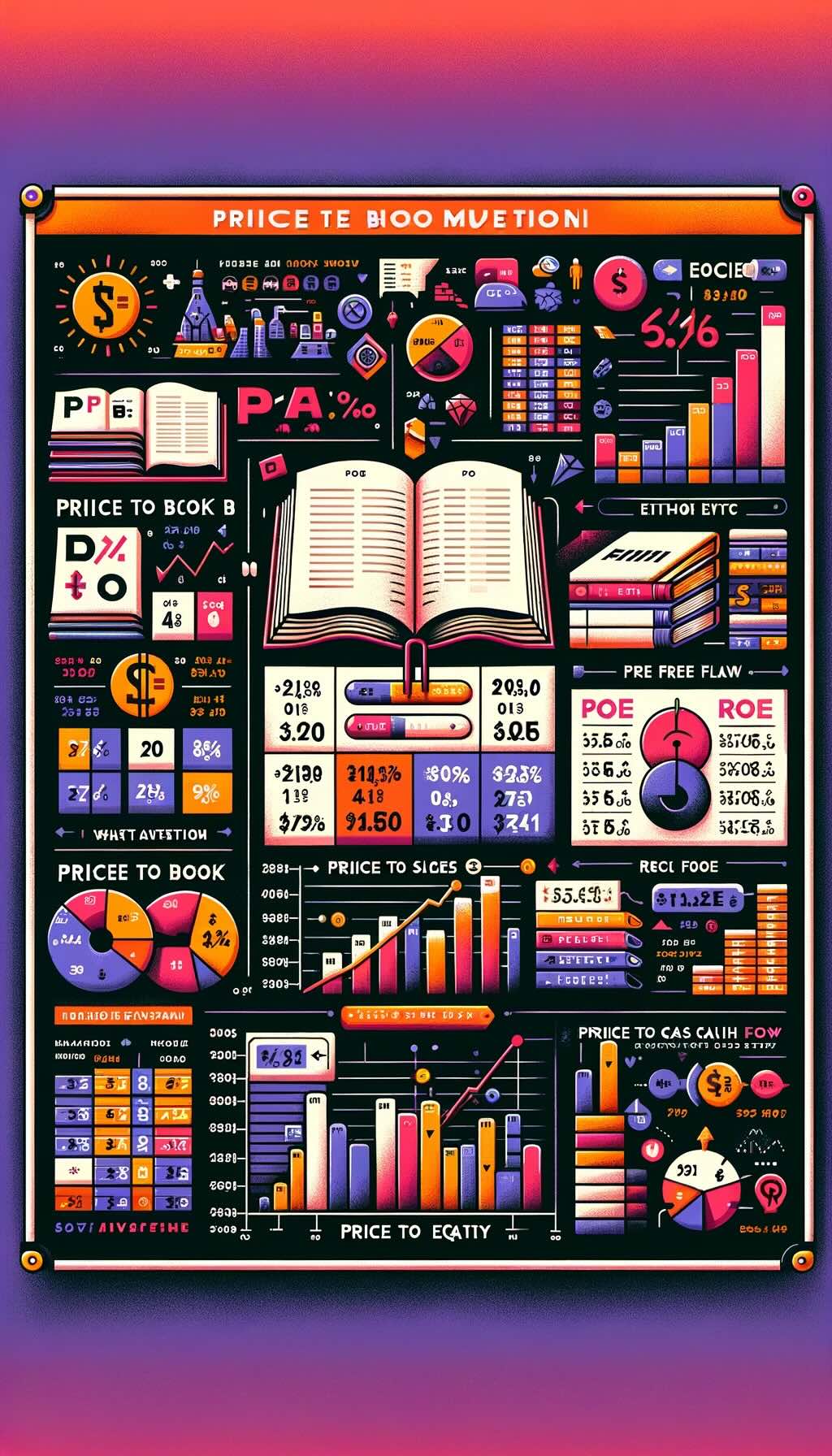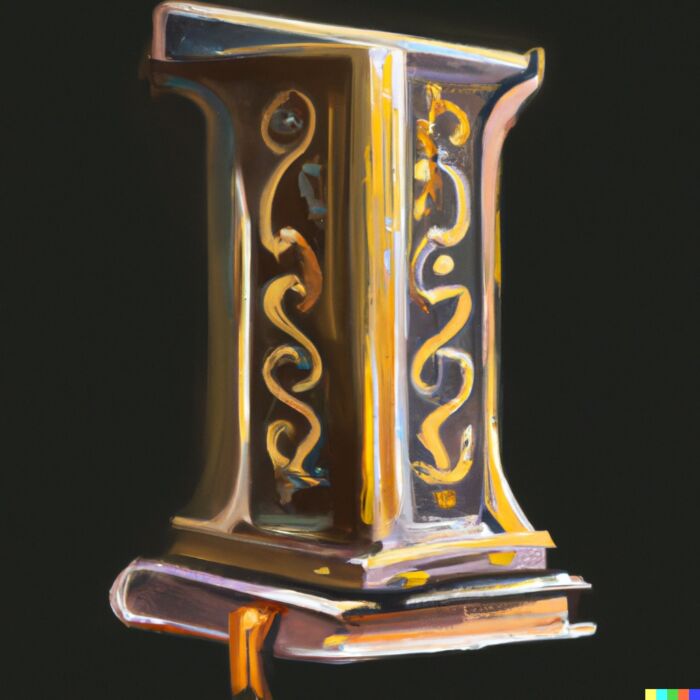Are you a value investor looking for your next undervalued gem? Then the price to book ratio (P/B Ratio) is possibly your best friend! This financial metric is a must-know for those looking to invest in undervalued stocks. The P/B Ratio compares a company’s current market price to its book value per share, giving you a sense of how the market values the company’s assets. As a value investor, you believe that the market can sometimes undervalue good companies, creating opportunities to invest in them at a discount. By using the P/B Ratio, you can identify these opportunities by finding stocks that are trading at a discount to their book value, indicating that they may be undervalued.
The P/B Ratio is particularly useful for value investors interested in companies with a strong asset base, such as those in the financial, energy, or industrial sectors. However, it is important to keep in mind that the P/B Ratio is just one of many metrics used in value investing. As with any investment decision, it’s crucial to consider other valuation methods and factors like the company’s management, financials, and competitive landscape. So, grab a cup of coffee and get to crunching those numbers, value investor!

Price to Book Ratio: Calculating P/B
As a value investor, you want to find companies that are undervalued by the market. One metric that can help you identify these opportunities is the price to book ratio (P/B Ratio). This ratio measures the market value of a company’s equity relative to its book value. The book value represents the company’s total assets minus its liabilities, and it’s divided by the number of outstanding shares to determine the book value per share.
The calculation of the P/B Ratio is straightforward. You divide the current market price per share of the company’s stock by its book value per share. A P/B Ratio of less than one indicates that the market values the company at a discount to its book value. In other words, the stock may be undervalued by the market. On the other hand, a P/B Ratio greater than one suggests that the market values the company at a premium to its book value, which may indicate that the stock is overvalued.
For value investors, the P/B Ratio can be a helpful metric to identify undervalued stocks. By comparing the market price to the book value per share, value investors can determine if the stock is trading at a discount to its intrinsic value. However, it’s important to keep in mind that the P/B Ratio is just one of many metrics used in value investing, and it should be used in conjunction with other valuation methods and fundamental analysis.
source: One Minute Economics on YouTube

Real Life Examples Of Price to Book Ratio
Imagine you’re out shopping for a car, and you come across two similar models from different dealerships. One is priced at $50,000, while the other is priced at $40,000. But wait, the second car also comes with some additional features, including a fancy sound system, GPS, and a sunroof. So which one is the better deal? This is where the P/B Ratio comes in handy!
The P/B Ratio is like comparing the price of the car to its book value. In this case, the book value is the total cost of the car’s parts and labor, minus any liabilities like loans or leases. Let’s say the book value of the first car is $45,000, while the book value of the second car is $35,000. That means the first car has a P/B Ratio of 1.11 (market price of $50,000 divided by book value of $45,000), while the second car has a P/B Ratio of 1.14 (market price of $40,000 divided by book value of $35,000). So, despite the second car having more features, the first car has a lower P/B Ratio, making it a better deal.
In the real world, P/B Ratios can be used to evaluate companies as well. For example, let’s take a look at Berkshire Hathaway, a company led by the legendary investor Warren Buffett. As of April 2023, Berkshire Hathaway has a P/B Ratio of 1.36, which is higher than the average P/B Ratio for the S&P 500 index. This suggests that the market values Berkshire Hathaway at a premium to its book value, which could be due to the company’s strong brand reputation, high-quality management, and successful track record of investing.
On the other hand, let’s consider a struggling company like GameStop, which made headlines earlier this year for its wild stock market ride. As of April 2023, GameStop has a P/B Ratio of 6.68, which is significantly higher than the average P/B Ratio for its industry. This indicates that the market values GameStop at a premium to its book value, even though the company has been facing challenges with the shift towards digital gaming and the impact of the pandemic on retail stores. In this case, the high P/B Ratio could be a red flag for value investors, suggesting that the stock may be overvalued by the market.
So, the next time you’re evaluating a potential investment opportunity, don’t forget to check out the P/B Ratio. It might just help you avoid paying too much for that shiny new car, or help you find the next undervalued gem in the stock market!
source: MoneyWeek on YouTube

Key Benefits Of Price to Book Ratio (P/B)
For value investors, the advantages of using the P/B Ratio as a valuation metric are numerous. Here are a few key benefits:
- Identifying undervalued stocks: The P/B Ratio is a simple and effective way to identify stocks that are undervalued by the market. If a company’s P/B Ratio is less than one, it may indicate that the market is undervaluing the company’s assets, providing a potential buying opportunity for value investors.
- Comparability: The P/B Ratio is a useful tool for comparing companies within the same industry or sector. Because book value is a standardized accounting measure, it’s easier to compare P/B Ratios across companies than it is with other valuation metrics like P/E Ratio or EBITDA.
- Focus on fundamentals: Value investing is all about focusing on a company’s fundamentals, and the P/B Ratio helps investors do just that. By looking at the book value of a company’s assets, value investors can get a better sense of a company’s underlying worth, rather than relying solely on the market’s current perception of the company.
- Limitations of other valuation metrics: While other valuation metrics like P/E Ratio or EBITDA are also important, they can be distorted by accounting practices or one-time events. The P/B Ratio, on the other hand, relies on tangible assets and liabilities, providing a more stable and reliable measure of a company’s valuation.
- Historical comparison: The P/B Ratio can also be used to compare a company’s current valuation to its historical levels. By comparing the current P/B Ratio to historical averages, value investors can get a sense of whether a company is undervalued or overvalued relative to its own historical performance.
Overall, the P/B Ratio is a useful metric for value investors who are looking to identify undervalued stocks with strong fundamentals. While it’s not the only metric to consider, it can provide valuable insights into a company’s true worth and potential for long-term growth.
source: SimplyInfo on YouTube
While the P/B Ratio can be a useful tool for value investors, it’s important to be aware of its limitations and potential drawbacks. Here are a few limitations and cons of using the P/B Ratio:
- Intangible assets not accounted for: The P/B Ratio is based solely on a company’s tangible book value, which means that it doesn’t take into account intangible assets like intellectual property or brand value. In some industries, these intangible assets can be extremely valuable, so the P/B Ratio may not provide a complete picture of a company’s true worth.
- Industry-specific factors: The usefulness of the P/B Ratio can vary depending on the industry. For example, in the financial sector, banks often have high P/B Ratios due to the nature of their business, which can make it difficult to compare them to other industries. It’s important to be aware of industry-specific factors when using the P/B Ratio.
- Historical comparisons can be misleading: While the P/B Ratio can be useful for historical comparisons, it’s important to be aware that a company’s book value can change over time. For example, if a company has been aggressively buying back shares, its book value per share may be higher than it was in the past, which could make the current P/B Ratio look artificially high.
- Distorted by accounting practices: The P/B Ratio is based on accounting measures, which can be subject to manipulation or distortion. For example, a company may have artificially inflated book value due to an accounting anomaly or one-time event, which could make the P/B Ratio look more attractive than it actually is.
- Not useful for high-growth companies: The P/B Ratio is most useful for mature, stable companies that have a lot of tangible assets on their balance sheets. For high-growth companies that are investing heavily in research and development or other intangible assets, the P/B Ratio may not be as useful.
Overall, while the P/B Ratio can be a useful tool for value investors, it’s important to be aware of its limitations and potential drawbacks. Investors should use the P/B Ratio in conjunction with other valuation metrics and consider industry-specific factors and accounting practices when making investment decisions.

Price to Book Compared With Other Value Ratios
When it comes to evaluating stocks, the P/B Ratio is just one of many metrics that investors can use. Here are a few comparisons of the P/B Ratio with other commonly used ratios:
A. P/B Ratio vs. P/E Ratio: The P/E Ratio is another popular valuation metric that investors use to evaluate stocks. While the P/B Ratio is based on a company’s book value, the P/E Ratio is based on earnings per share. The P/B Ratio is typically used to evaluate stocks with stable, predictable earnings, while the P/E Ratio is more useful for growth stocks that may not have a lot of tangible assets on their balance sheets. Generally speaking, a low P/B Ratio can indicate that a company is undervalued, while a low P/E Ratio can indicate that a company is undervalued relative to its earnings potential.
B. P/B Ratio vs. Dividend Yield: Dividend yield is another metric that investors use to evaluate stocks. Dividend yield is calculated by dividing the annual dividend per share by the current stock price. While the P/B Ratio is a measure of a company’s valuation based on its assets, dividend yield is a measure of a company’s dividend payouts relative to its stock price. Investors who are looking for steady income may prefer stocks with high dividend yields, while value investors may prefer stocks with low P/B Ratios.
C. P/B Ratio vs. Price to Sales Ratio: The Price to Sales (P/S) Ratio is another metric that investors use to evaluate stocks. The P/S Ratio is calculated by dividing the stock price by the company’s revenue per share. While the P/B Ratio measures a company’s valuation based on its book value, the P/S Ratio measures a company’s valuation based on its revenue. The P/S Ratio is often used to evaluate companies with low or negative earnings, such as start-ups. For example, Amazon.com, Inc. has a P/B Ratio of 15.61, but a P/S Ratio of 3.50, which indicates that investors are willing to pay a premium for its revenue growth potential.
D. P/B Ratio vs. Return on Equity: Return on Equity (ROE) is a measure of a company’s profitability that compares net income to shareholders’ equity. ROE indicates how much profit a company generates with each dollar of shareholder equity. While the P/B Ratio is a measure of a company’s valuation based on its book value, ROE measures a company’s profitability based on its equity. A company with a high ROE and a low P/B Ratio may be undervalued relative to its earnings potential. For example, Johnson & Johnson has a P/B Ratio of 5.33, but an ROE of 24.28%, which indicates that it is generating significant profits with its equity.
E. P/B Ratio vs. Price to Free Cash Flow Ratio: The Price to Free Cash Flow (P/FCF) Ratio is a metric that investors use to evaluate a company’s cash flow. The P/FCF Ratio is calculated by dividing the stock price by the company’s free cash flow per share. While the P/B Ratio measures a company’s valuation based on its book value, the P/FCF Ratio measures a company’s valuation based on its cash flow. A company with a low P/B Ratio and a low P/FCF Ratio may be undervalued relative to its cash flow potential. For example, AT&T Inc. has a P/B Ratio of 1.48, but a P/FCF Ratio of 8.01, which indicates that investors may be undervaluing its cash flow potential.
Overall, each of these ratios provides a different perspective on a company’s valuation, and investors should use a variety of metrics to make informed investment decisions. While the P/B Ratio is a useful tool for value investors, it’s important to consider a company’s overall financial health and growth prospects when making investment decisions.
source: Rynance on YouTube

Price to Book: P/B Ratio Final Thoughts
In conclusion, the Price to Book Ratio (P/B Ratio) is a popular metric that value investors use to evaluate a company’s valuation. The ratio compares a company’s stock price to its book value, which is the difference between its assets and liabilities. A low P/B Ratio suggests that a stock may be undervalued, while a high P/B Ratio suggests that a stock may be overvalued.
While the P/B Ratio is a useful tool, it’s important to keep in mind its limitations and drawbacks, such as its inability to capture intangible assets and its reliance on accounting methods. Additionally, investors should consider other metrics in conjunction with the P/B Ratio, such as the P/E Ratio, dividend yield, return on equity, and price to free cash flow ratio.
Value investors should use the P/B Ratio as one of several tools in their investment analysis, rather than relying solely on this metric to make investment decisions. By taking a holistic approach to investment analysis and considering multiple factors, value investors can make informed decisions and potentially generate attractive returns over the long term.
Important Information
Comprehensive Investment Disclaimer:
All content provided on this website (including but not limited to portfolio ideas, fund analyses, investment strategies, commentary on market conditions, and discussions regarding leverage) is strictly for educational, informational, and illustrative purposes only. The information does not constitute financial, investment, tax, accounting, or legal advice. Opinions, strategies, and ideas presented herein represent personal perspectives, are based on independent research and publicly available information, and do not necessarily reflect the views or official positions of any third-party organizations, institutions, or affiliates.
Investing in financial markets inherently carries substantial risks, including but not limited to market volatility, economic uncertainties, geopolitical developments, and liquidity risks. You must be fully aware that there is always the potential for partial or total loss of your principal investment. Additionally, the use of leverage or leveraged financial products significantly increases risk exposure by amplifying both potential gains and potential losses, and thus is not appropriate or advisable for all investors. Using leverage may result in losing more than your initial invested capital, incurring margin calls, experiencing substantial interest costs, or suffering severe financial distress.
Past performance indicators, including historical data, backtesting results, and hypothetical scenarios, should never be viewed as guarantees or reliable predictions of future performance. Any examples provided are purely hypothetical and intended only for illustration purposes. Performance benchmarks, such as market indexes mentioned on this site, are theoretical and are not directly investable. While diligent efforts are made to provide accurate and current information, “Picture Perfect Portfolios” does not warrant, represent, or guarantee the accuracy, completeness, or timeliness of any information provided. Errors, inaccuracies, or outdated information may exist.
Users of this website are strongly encouraged to independently verify all information, conduct comprehensive research and due diligence, and engage with qualified financial, investment, tax, or legal professionals before making any investment or financial decisions. The responsibility for making informed investment decisions rests entirely with the individual. “Picture Perfect Portfolios” explicitly disclaims all liability for any direct, indirect, incidental, special, consequential, or other losses or damages incurred, financial or otherwise, arising out of reliance upon, or use of, any content or information presented on this website.
By accessing, reading, and utilizing the content on this website, you expressly acknowledge, understand, accept, and agree to abide by these terms and conditions. Please consult the full and detailed disclaimer available elsewhere on this website for further clarification and additional important disclosures. Read the complete disclaimer here.






